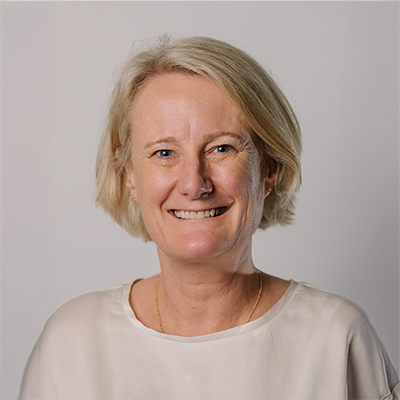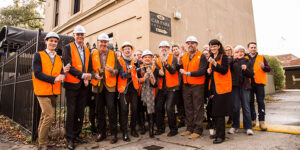
Navigating change in the public and social sectors
Susie King reflects on a panel conversation she facilitated with senior leaders during a session at IPAA Victoria’s Public Sector Week 2019 on navigating transformation and disruption in the public and social sectors.

- Governments around Australia are grappling with unprecedented disruption and the policy and service delivery complexities associated with subsequent reforms.
- The panel at IPAA Victoria’s Public Sector Week 2019 called out many opportunities from disruption including the potential of digital technology to help governments better understand what citizens want and enable real time feedback so that people are more at the centre of the service delivery process.
- The panel members highlighted the importance of a rigorous focus on outcomes that are meaningful to the people and communities benefiting from the service, and on the value of collaboration between the public, social and corporate sectors in improving outcomes citing examples of social procurement and innovative financing models.
- Insights were also shared about how best to manage and maintain a healthy organisation and workplace culture in the face of change and the new skills and capabilities the public sector needs in this current climate.
Social Ventures Australia (SVA) partnered with the Institute of Public Administration Australia (IPAA) Victoria during its Public Sector Week 2019 to explore how the public and social sectors can navigate transformation and disruption. On the panel were:
- Kym Peake, Secretary, Department of Health and Human Services (Vic) and President, IPAA Victoria
- Lisa Paul AO PSM, Adjunct Professor at Melbourne School of Government, Chair of headspace, non-executive director at SVA, and previously Secretary of the Commonwealth Department of Education and Training, and
- Suzie Riddell, SVA’s CEO and non-executive director at The Observership Program.
(See end of the article for biographies and details on IPAA Victoria or watch the whole panel discussion on video.)
Governments and the public sector across Australia are confronting unprecedented disruption. There are significant pressures from demographic and other trends such as rapid population growth, an aging population and rising expectations from citizens. Our transport, healthcare, education and community support systems and services are increasingly being challenged to continue delivering the best outcomes for all Australians. At the same time, the social sector is dealing with the frontline implications of these changes.
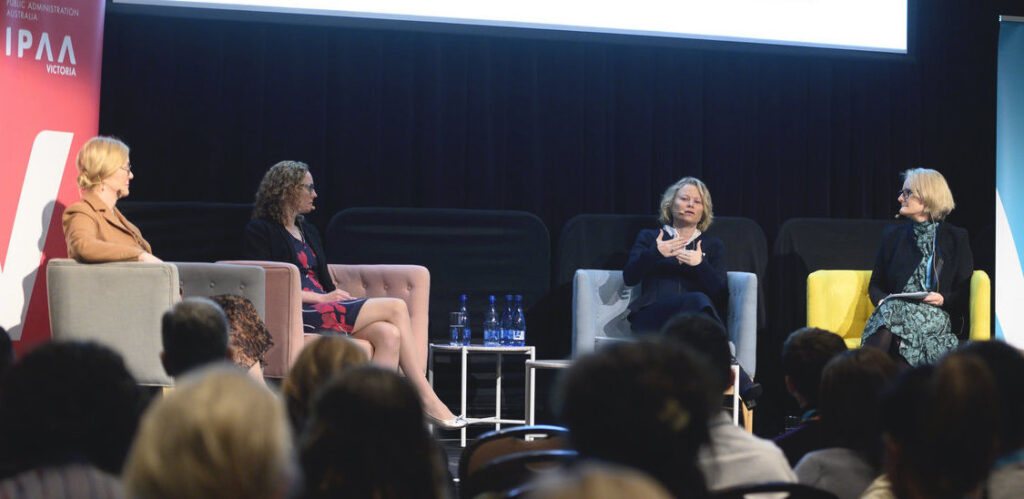
This conversation took place in the context of the Victorian Government delivering an ambitious reform agenda focused on addressing these disruptions and significantly transforming policy settings, funding mechanisms and service delivery in partnership with the social sector. But much of it is relevant around the country, as the Commonwealth and all States and Territories grapple with the policy and service delivery complexities of reforms, such as the rollout of the National Disability Insurance Scheme.
Successfully navigating these ongoing disruptions and transformations is a necessity. Many of the panel contributions aren’t new but some surprised me.
The panel spoke about the current social and political climate, some of the broader challenges and opportunities the public sector faces in ‘governing’ today, as well as highlighting the even greater importance of really understanding what citizens want and the value of collaboration between the public, social and corporate sectors in improving outcomes for all Australians.
Putting people at the centre
What surprised me was that all panellists agreed that disruption and transformation provide more opportunity than threat. They specifically called out the potential of digital technology to enable the public sector to better understand what people really want, for real-time feedback on service experiences and to better target investments. They observed that when used properly, digital technology can also enable a shift in the power balance towards citizens and facilitate true co-design which leads to better outcomes.
“The opportunities are there for being able to get closer to citizens,” said Paul. “There’s an increasing number of platforms which allow you to use data cleverly and some terrific empowering sites which enable conversations that have never been allowed before.”
Paul emphasised the need to understand what is in the heart of the people that we are here to serve – what are their hopes and aspirations?
As Chair of National Youth Mental Health Foundation, headspace, Paul sees the critical importance of the way they involve young people and are led by youth voices.
“Through national and local bodies, they reach young people connected to headspace’s 110 centres, and they take it very seriously. It’s the essence of the organisation in a values sense. I’d love to see the public sector get into that amount of empowerment of citizens.”
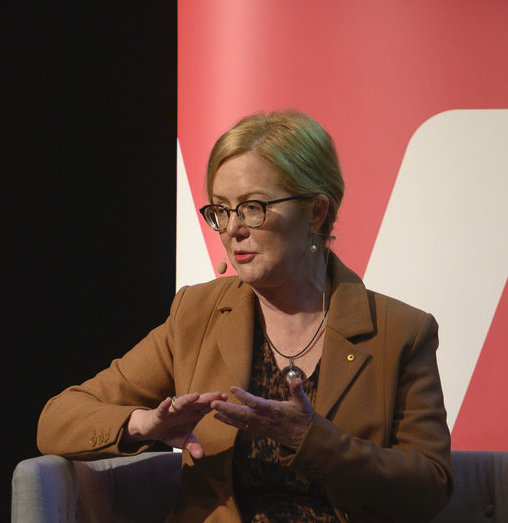
Peake added that it’s not just a data exercise. “It’s actually the stories that sit behind that about what experience matters and why that experience matters, and then being able to share that story.
“So if you have prostate cancer, what are the things that really matter to you, not only about your clinical treatment, but about quality of life beyond the treatment. This then supports a very different conversation between the clinician and the patient about the clinical options and the trade-offs with those options.”
A rigorous focus on outcomes
Riddell also highlighted the value of being person- or human-centred in the design of services when it comes to understanding and measuring meaningful outcomes.
Putting people at the centre is difficult when it comes to accountability. But when it’s done well, it is totally transformative for those people.
“SVA is currently doing some exploratory work about older women at risk of homelessness, the fastest growing group of people experiencing homelessness in Australia.
“Putting those women at the centre allows us to deeply understand what the drivers of better outcomes are. These include gender equality in financial wellbeing and employment, and how ageism plays out in the workplace. Putting people at the centre is difficult when it comes to accountability. But when it’s done well, it is totally transformative for those people.”
She went on to share that, “One of the areas of support SVA provides to the not-for-profit sector is to get clear on what outcomes matter to them and how that aligns with which outcomes matter to the public sector so that we’re asking similar questions.”
In my professional experience, getting that alignment across sectors around what matters to citizens is crucial.
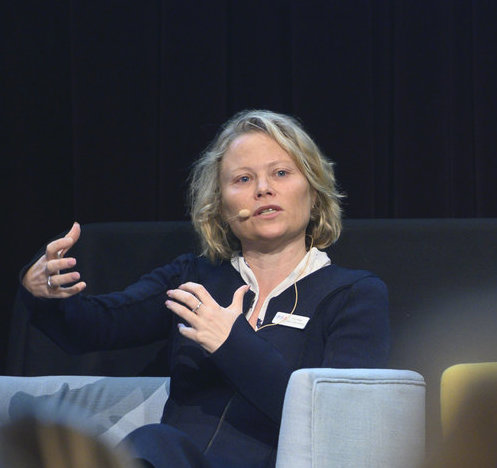
Peake praised the work being done in New Zealand on linking investment to outcomes.
“We’re getting more sophisticated at this here in Victoria. Different financing options, and methods of modelling demand and the impact of investment allows us to make the best use of finite public resources.”
The Commonwealth and other jurisdictions are also increasingly using these options, such as social impact bonds (SIBs) of which SVA currently manages five across Australia, or impact investment funds that invest debt and equity in social enterprises. These vehicles, especially SIBs, reinforce the need for a focus on the most important outcomes and measuring performance against the achievement of these.
Enabling public and social sector partnerships
Not surprisingly, disruption and transformation requires – and sometimes even forces – government departments, agencies, and other sectors to improve how they work together.
Riddell observed that SVA has seen how cross-sector collaboration can drive enormous rewards in different areas focused on changing the dynamics of social disadvantage in Australia.
“Philanthropy and not-for-profits have a role in taking risks where governments aren’t able to. Working in partnership with not-for-profits funded by philanthropy, we’ve been able to experiment and test things on the ground in communities. If the outcomes are better than what we’d expected, then the work becomes ‘How do we scale? How do we use that as a disruption?’”
As an example, Riddell cited the transformation happening in Victoria through social procurement, providing employment for young people who currently face significant barriers to employment.
“SVA has been working to grow the supply of ‘great’ social enterprises and the government has been creating the demand by putting policies in place. Underneath all of that is a relentless focus on the social outcomes which matter.”
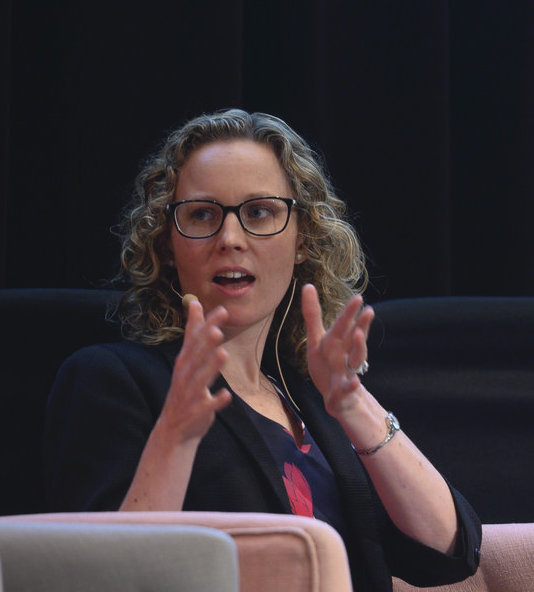
In this vein, Paul emphasised that there are many innovative ways for the public, social and corporate sectors to collaboratively think differently about using taxpayers’ dollars more efficiently than traditional ways of government.
As an example, Paul recalls the innovations behind establishing Goodstart Early Learning when the ABC Learning childcare business collapsed just before Christmas in 2008. At that time, Paul was the Secretary of the then Department of Education, Employment and Workplace Relations.
… this extremely efficient use of taxpayers’ money… was so unusual that it had to be specially authorised because it had never been done before.
SVA led a group of not-for-profit organisations to raise money to ‘save’ over 600 childcare centres that would otherwise have closed, many providing vitally important early learning services to children experiencing disadvantage or vulnerability.
“All they [the consortium] needed from government was a loan of $15 million at commercial interest rates,” remembered Paul. “And because the Federal Government is so used to just giving grants, this extremely efficient use of taxpayers’ money – a loan that was going to be repaid – was so unusual that it had to be specially authorised because it had never been done before.”
As Paul highlighted, the creation of Goodstart (Australia’s largest social enterprise) is a good example of how governments can employ different, and even unconventional, ways of thinking and partnering to maximise the impact of its investments. (See Goodstart: a story of impact investing)
Managing change
The panel acknowledged that the public sector is in constant evolution, and they shared their unique experiences and insights about how best to manage this and avoid change fatigue. It was refreshing to hear such heartfelt consensus on the importance of looking after your people and the value of leaders who demonstrate authenticity and compassion.
… there’s no way that you should ever compromise the how for the what.
Describing herself as a culturalist rather than a structuralist, Paul explained: “You can have the worst structure in the world but you can work with it if you’ve got a great culture”. She emphasised the importance of two things: articulating the strategic direction in a way that suits everyone’s needs, and genuinely caring for people. “That means that there’s no way that you should ever compromise the how for the what.”
Peake stressed, “It’s important to have clear anchors back to the values that matter to us, and the behaviours that make it a safe and welcoming place to come to work, and for the clients or customers that we work for.”
Paul shared her view that the leader needs to be able to talk to everyone – wherever they are in terms of responding to change. She also cited research she’d recently read, which really stayed with me, about how every organisation has different groups of people in terms of where they are on the continuum of loving or hating change.
As Paul said, “At one end of the spectrum are those that think there isn’t enough change. They’re scary people but they’re really useful. Then along the continuum, the next group are change agents. They quite like change and they like to lead it. They might not have thought of it, but they’re quite happy to be change agents. The next group along are pragmatists. They think, ‘Look, if I can be convinced about why this change is a good thing, I’ll go along with it.’ The next group is the sceptics. They think, ‘We’ve had so much change anyway. Governments come and go, and my thing goes on.’ And then lastly, there’s the traditionalists [who are] really worried about losing things – losing values, losing the history and corporate memory of the organisation.”
Paul explained that as a leader you need to know that most of these groups will probably only hear a message comfortably from the group immediately to their left. So if you’re a traditionalist down the end, then a sceptic might be convincing. And a pragmatist might just be able to convince a sceptic that it’s worth going with this change. And a change agent will definitely be able to convince the pragmatists. And a crazy disruptor on the other end will of course be able to excite the change agent.
Her message resonated with me. It aligns with what I’ve observed with clients in the public and social sectors as well as my previous life consulting to large organisations in the corporate world here in Australia and overseas.
You can’t leave any part of yourselves behind when you come into the office for a working day.
Paul also spoke about the need for the skills to manage the constant change. “First of all, analogous to cardiopulmonary resuscitation guidelines, you need first to look after yourself – so your own mental and physical health and wellbeing. These things are really important. And you need a department or an agency that genuinely cares for its people – the whole person.
“You can’t leave any part of yourselves behind when you come into the office for a working day. Those things are incredibly important and make a massive difference to your team’s resilience towards change.”
Investing in capability
The panel provided perspectives on the evolving skills and new capabilities required of the public sector. It was heartening to hear that implementation, communication and influence, and adaptive project management were at the top of their list. My observation, mostly with clients in the social sector, is that these skills are increasingly important and can’t just be brought into organisations.
They’re not technical capabilities but relational and adaptive abilities.
“As most improvement agendas fail at the point of implementation rather than the idea,” said Peake, “being really good at implementation and translation into practice is a capability that we have to keep investing in.
Other important capabilities include collaboration and influence, according to Peake.
“Eighty per cent of time in my job is about stewardship,” said Peake. “It’s about being able to communicate the long-term direction and bring people along. So the ability to influence others, to negotiate outcomes and to really build momentum are fundamental capabilities in the public servant. They’re not technical capabilities but relational and adaptive abilities.
“Another is in project management. How do you sustain momentum when you’re talking about those adaptive changes that are going to happen over a long period of time? We’ve got the seeds of developing the methods and the capabilities around that adaptive approach to managing big transformations in the Victorian public sector, but we should invest a lot more energy in it.”
Peake emphasised the significant shift in health systems around the world from being designed to deal with infectious diseases and trauma. In Australia now, the burden of disease is more about chronic disease and the treatment – and thereforemore about human behaviour and lifestyle changes.
“It’s much more like social services in terms of what are the ways to engage someone in making difficult changes in their life and having those changes stick. So the evidence is much less clear. The way you translate evidence in practise, is not just fidelity to a clinical guideline. The ability to scale up needs to be done in a way that is much more aligned to the social context in which people live; what works in Mildura is not going to work in Dandenong.”
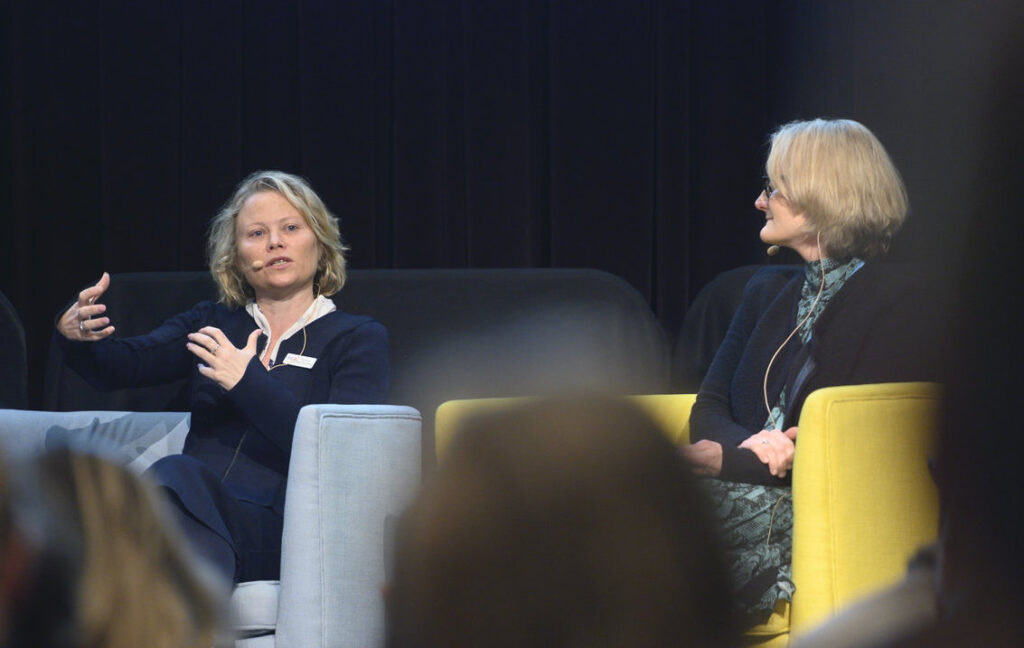
Prompted by a question from the audience, the panel discussed how we might develop long-term strategies that support the public sector to predict and anticipate change and disruption.
Peake believes that a combination of things are needed: timing, pace, bringing people along, telling the stories that make the reform real, and being able to continuously adapt and improve as we go. She also stressed the significant value of having a strong public institution to back the reform.
“The best way to really future-proof good policy and the success of initiatives is a combination of the timing and pace and bringing people along with you so there is demand from the consumer of the service, and the other partners in the delivery of the service – they know that this is working, and that this is the next step we should take, rather than we should unwind it and start again.
Peake also emphasised the power of stories that make the change that has occurred real, tangible and human. “You’re not just telling the story of data and evidence but the story of human experience. It helps to maintain the momentum.”
Peake also called out the need to adopt a learning and adapting approach so that, “in any big transformation, there’s a thousand improvements along the way.”
… it’s quite difficult to sustain long-term reform if you don’t have an enduring, strong, self-interested public institution that really helps to do that.
“Also, increasingly I believe that having a strong public institution in a big long-term reform agenda is really powerful. With the Medicare reforms, there has been a strong public institution that has sustained the benefits of those reforms. Whilst partners in the not-for-profit sector and private sector are incredibly important, it’s quite difficult to sustain long-term reform if you don’t have an enduring, strong, self-interested public institution that really helps to do that.”
To me, recent examples of this approach here in Victoria and within Peake’s portfolio are the new agencies, Respect Victoria and Family Safety Victoria.
Creating space for risk-taking inside and outside government
I asked the panel what environment is needed for government to be able to take risks, try, fail and learn – given that the problems we face today are more complex than ever, and we don’t always know how to solve them.
… if you’re going to take risks, you better know what success looks like.
The panel emphasised the need to know what success looks like at the outset.
“The primary thing that we have learnt when working with government and outside of government,” said Riddell, “is that if you’re going to take risks, you better know what success looks like.”
Riddell also called out that often risk and experimentation is happening, but without any evaluation.
“There’s lots of risk-taking where no one has spent enough time at the beginning thinking about what does good look like, or what would failure look like. It’s just an experiment without an experimental design that loops back and says, ‘Yes, that worked, do more of it’ or ‘No that didn’t work so quick shut it down.’”
Riddell also described SVA’s experience with its initiative called Evidence for Learning and the resistance it comes up against in some parts of the education sector to doing research.
“The initiative aims to get evidence of what we know works in education into the hands of school principals and school teachers to make decisions about priorities in the school, and what happens in the classroom,” explained Riddell.
“The resistance from a lot of practitioners is that they don’t want to be doing new research and experimenting on children.
“Our pushback is to say we already are experimenting on children when we implement new policy or when we give teachers and leaders a level of autonomy to decide in a local context what’s appropriate for those children and their families. That is already a level of risk and a level of experimentation.
“To get more comfortable with the appropriate ways to take risks means being honest about when we are taking risks and experimenting, and being really clear up front, what does good look like.”
… thinking about [the government’s] pace and rhythm provides more chance of creating that authorising environment.
Peake also stressed the importance of understanding the cycle of the government term and its effect on government’s ability to take risk.
“In the first year, the focus for at least the first six months tends to be on implementation and delivery of election commitments. The next 18 months is the opportunity to really seed bigger ideas and start testing and trialling new ways of working.
“By the last year of the term, with any government that I’ve worked with, the risk appetite tends to diminish but there’s an opportunity to embed and start scaling things that have worked, and to shut down things that aren’t working. Probably starting something new three months out from an election means that you’ve got less tolerance for failures. So, thinking about pace and rhythm provides more chance of creating that authorising environment.”
The effect of the media
Reflecting on broader challenges facing the public sector, the panel noted the difficulties posed by the 24/7 news cycle as well as the decreasing trust in democratic institutions.
“The media cycle is less than a minute,” said Paul. “It’s a completely different world. Politicians are under intense scrutiny. And so are you [as public servants]. It all cascades down to the public sector. So the pressures are intense.
“And there’s a decrease in trust in democracy; people increasingly only trust people who they know and who look like them due in part to the way social media works.”
We all have very short periods of time to have that impact, and so we need to think and challenge ourselves…
Peake coupled this with the shortness of the political cycle in which to leave an enduring legacy of improvement.
“We all have very short periods of time to have that impact, and so we need to think and challenge ourselves about what the big ideas are and what improvements can be achieved.
“It’s so much more difficult for governments to direct resources to something when the payback is not going to be in the term of the government.”
The panel also noted the threats to Western democracy being seen around the globe, and the increasing importance of the public sector’s role as stewards of Western democracy and the Westminster system.
Interestingly, Peake shared her perspectives on two forces which she described as profound in the political-social compact. The first is that over the last 10 to 15 years, we’ve seen much less willingness of stakeholders to negotiate and settle. The idea of the Accord1 is hard to imagine in today’s world, and in part that does go back to the influence of social media and the media cycle.
“The second is that although we don’t see quite the same stark manifestations of disenfranchisement that you see in the USA and the UK, we do see the seeds of it in Australia. That provides profound challenges. How do you speak to very different perspectives and community interests across the country?”
Enabling community conversations
A final takeaway for me from this conversation is the important role the public sector plays as a conduit to government on what communities need and want. Peake’s advice was that “it’s not acting politically to really be connected to communities, to understand their perspectives and where community tolerance is going to be stretched too far in a transformation. And then to build that into the advice that we provide government about options and pacing, and sequencing of change.”
It’s a shift away from the stereotypical view of the public sector as the providers of dispassionate advice…
Peake’s positioning of the role of the public sector as communicators and translators of the needs of community in the development of policy and advice to government is interesting. It’s a shift away from the stereotypical view of the public sector as the providers of dispassionate advice, while politicians have traditionally focused on their public mandate. To me it makes real sense. It’s a recognition of the necessity of policy and implementation reflecting the lived experience of people in communities of all different types across Australia in order to achieve the outcomes we all seek.
… where there is stigma and discrimination, it is very difficult to gain a social licence to invest.
In this vein, Peake also spoke about the important role of royal commissions. The Department of Health and Human Services that she leads has been involved in several major ones in recent years, including the first nationally into domestic and family violence as well as the current Royal Commission into Victoria’s Mental Health System.
“I think the bigger reason that state governments in particular have turned to royal commissions is because where there is stigma and discrimination, it is very difficult to gain a social licence to invest.
“Whether we think about family violence or mental health, the disruption that comes through the royal commission format is really a conversation with the community, which is aimed at shocking, and at shifting the norms, beliefs and attitudes that drive that stigma and discrimination. This enables a conversation about transformation. Then the conversation about investment is put into a completely different frame.”
IPAA Victoria
A professional member-based association, the 90-year old Institute of Public Administration Australia (IPAA) Victoria brings together all three levels of government in Victoria, as well as relevant sections of the private and community sectors. IPAA Victoria offers thought leadership, professional development courses and events, tailored to suit the needs of the public purpose sector. IPAA Victoria organises the biennial Public Sector Week, a week-long event that brings together the public sector in Victoria to drive fresh thinking, cultivate new ideas, and ignite positive opportunities by hosting a series of seminars and interactive development sessions.
Kym Peake
Kym is Secretary of the Victorian Department of Health and Human Services, a position she has held since November 2015. She is also President of IPAA Victoria and has extensive experience in both State and Commonwealth government including as Deputy Secretary, Governance Policy and Coordination at the Department of Premier and Cabinet. She has also held senior positions at the former Department of Economic Development, Jobs, Transport and Resources and the former Department of Education and Early Childhood Development. She also has federal government experience, having held positions at the Department of Prime Minister and Cabinet.
Kym has an Executive Master of Public Administration, a Bachelor of Arts (Hons) and a Bachelor of Laws, from the University of Melbourne.
Lisa Paul AO PSM
Lisa is currently an Adjunct Professor at Melbourne School of Government, as well as a Councillor at Bond University. Lisa held the position of Secretary of the Commonwealth Department of Education and Training (or its predecessor departments) from 2004 until 2016. In October 2003 she was awarded a Public Service Medal for her outstanding public service as Chair of the Commonwealth Bali Interagency Taskforce in the development of the Commonwealth’s response in support of the victims of the Bali bombings. In June 2011 Paul was appointed an Officer of the Order of Australia for distinguished service to public sector leadership in key policy and program implementation, particularly through driving reform in education, employment and workplace relations. She currently sits on the boards of several not-for-profits, including as Chair of headspace and as a non-executive director at SVA.
Lisa has a Bachelor of Arts from the Australian National University.
Suzie Riddell
Suzie is Chief Executive Officer of SVA, a position she has held since October 2018. Prior to that Suzie was SVA’s Chief Strategy Officer where she drew on her extensive experience in the social purpose and commercial sectors to lead SVA’s systems change agenda. Prior to joining SVA, Suzie was a consultant at Bain & Company. She is a non-executive director of The Observership Program, and formerly of YWCA. She was a winner of AFR BOSS Magazine’s Young Executive of the Year 2017.
Suzie holds a Bachelor of Accounting from the University of Technology, Sydney and a Master of Philosophy (International Relations) from the University of Cambridge.
1 Australian politics explainer: the Prices and Incomes Accord, The Conversation


